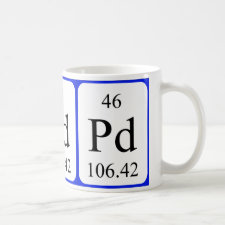
Authors: Shafizadeh F, Taghizadeh M, Hassanpour S
Article Title: Preparation of a novel magnetic Pd(II) ion-imprinted polymer for the fast and selective adsorption of palladium ions from aqueous solutions.
Publication date: 2019
Journal: Environmental Science and Pollution Research
Volume: 26
Issue: (18)
Page numbers: 18493-18508.
DOI: 10.1007/s11356-019-05233-8
Abstract: A novel magnetic ion-imprinted polymer with high accessibility to palladium ions was synthesized via co-precipitation polymerization. Accordingly, a ternary complex composed of PdCl2 as an imprinting ion, 8-aminoquinoline (AQ) as a ligand, and 4-vinyl pyridine (4-VP) as a complexing monomer was applied to Fe3O4@SiO2 as magnetic core, followed by precipitation polymerization using 2-hydroxyethyl methacrylate (2-HEMA) as a co-monomer, ethylene glycol dimethacrylate (EGDMA) as the crosslinker, and 2,2-azobisisobutyronitrile (AIBN) as an initiator in the presence of 2-methoxyethanol as a solvent. The palladium ions were leached out by a solution containing 50% (v/v) HCl. The synthesized polymer was characterized physically and morphologically using different techniques. In order to assess the conditions required for adsorption, as well as the selectivity and reusability, batch adsorption experiments were carried out. The experiments exhibited that the maximum adsorption capacity was about 65.75 mg g-1 at 25 ℃ , while the pH solution and the adsorbent dose were 4 and 1 g L-1, respectively. Kinetic studies of experimental data demonstrated that they correspond very much to the pseudo-second-order kinetic model. The development of the Langmuir and Freundlich isothermal models on the equilibrium data proved to correspond well to the Langmuir isotherm model. Interferences studies of the magnetic polymer demonstrated higher affinity and discernment for palladium ions than other co-existing ions in the solutions. Spontaneous (Δ G < 0) and exothermic (Δ H < 0) behavior of the adsorption process is confirmed by thermodynamic studies. In addition, the affinity of the spent polymer has not been dramatically reduced over at least five regeneration cycles
Template and target information: palladium ion, Pd(II)
Author keywords: palladium, Magnetic ion-imprinted polymer, adsorption, selectivity, kinetics, isotherms



Join the Society for Molecular Imprinting

New items RSS feed
Sign-up for e-mail updates:
Choose between receiving an occasional newsletter or more frequent e-mail alerts.
Click here to go to the sign-up page.
Is your name elemental or peptidic? Enter your name and find out by clicking either of the buttons below!
Other products you may like:
 MIPdatabase
MIPdatabase









